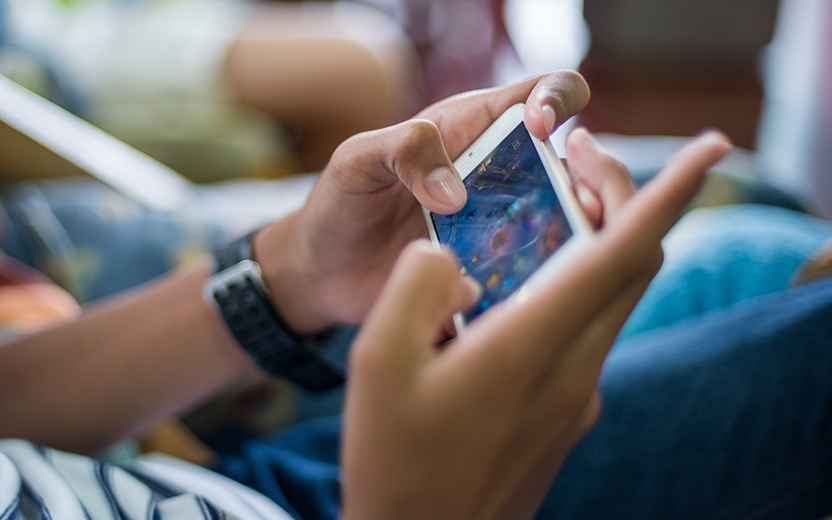Incorporating an app into the omnichannel experience

Fashion retailers have been some of the hardest hit by store closures in 2016, but this doesn’t have to mean the end for the high street. Consumers expect to move seamlessly between online and in-store experiences. Retailers at the top of their game are adapting to these expectations by making the shopping experience more fluid and convenient across multiple channels.
The mobile uprising
Mobile apps in particular can bridge the gap between online and offline shopping, resulting in a truly omnichannel experience. Apps provide not only an additional revenue stream but an opportunity to take advantage of rich online data to provide highly personalised and engaging experiences in-store.
The shift to mobile is already clear to see, with payment methods moving away from paper and plastic and onto shopper’s devices. Nearly 60% of shoppers use their smartphones in-store to look up product information or to compare prices, and it’s now estimated that 64% of people in the UK will be mobile users by the end of 2017. It’s also been suggested that baby boomers are just as eager to use new technologies – such as artificial intelligence and mixed reality – as millennials are.
So how can you embrace this shift in consumer behaviour and how could this save the high street?
Loyalty
Taking your loyalty scheme onto an app enables customers to stay connected across all touchpoints with your brand and collect points without having to remember a rewards card. A report from RetailDive found that cardless loyalty schemes drive both the frequency of visits and spend on mobile. Customers are willing to exchange personal data for loyalty schemes, offering valuable insights into customer demographics, so you can make your marketing more relevant. Additionally, loyalty schemes provide a valuable reason for customers to download your app and once downloaded, you’ll have a direct channel to communicate with them.
Push Notifications
Keeping customers up-to-date with the latest arrivals and promotions is vital to providing an excellent shopping experience and developing brand loyalty. Push-notifications enable you to send marketing, order updates and post-purchase messaging to app users regularly in a format that’s difficult to miss. Offering personalised deals and store specific promotions can drive customers to buy both online and in-store. Wal-Mart has introduced discounts for online shoppers if they collect orders in-store, increasing store footfall and ultimately gaining additional sales, whilst Macy’s has seen shoppers spend an additional 25% when collecting online orders in-store. Promotional push-notifications have been found to drive as many as 9.6x more users to make a purchase on mobile. Keeping your customers thinking about your brand will have a positive impact on their shopping habits both online and in-store.
In-store Wifi
So your customers have been prompted by your push notifications and are ready to use your loyalty scheme on their phone in-store, but they have used all of their mobile data or can’t find any signal. A report by Apadmi showed that 46% of customers expect stores to have free wifi, and by not having free wifi in-store, your customers are missing out on another opportunity to interact with your brand. Supplying wifi facilitates customer engagement with more than just your mobile channels, they can interact with your brand, check-in on social media or research information about your products. Getting connected personalises the experience and gives your customers the freedom to shop the way they want to.
Stock Checkers
In-app stock checkers are a fantastic way for customers to see if a product they want is available in-store, and for those planning to buy or collect in store, this is a priority. Showing in-store availability facilitates convenience, especially for those who don’t want to ask a member of staff for assistance; and in busy periods it could save both your store assistants and your customers’ time. Being able to check stock levels from the comfort of their homes can have a positive impact on store footfall, as customers will be able to make a purchase in person when they can’t wait for the items to be delivered. The House of Fraser app is a great example, offering the ability to show stock availability based on a customer’s saved favourite store.
Consistency
Consistency across channels is crucial to creating a seamless omnichannel experience. Branding, checkout and delivery options have to be consistent across apps, desktop and mobile web and be integrated to enable a customer to begin their journey on one channel and complete it on another. It’s already been found that 47% of shoppers who interact with retailers across 10 or more channels make purchases from their favourite website at least once a week.
An app can take you truly omnichannel
Retailers can greatly decrease the risk of falling victim to fading interest in the high street by incorporating an app into their offering and providing consumers with the omnichannel experience they expect.
Leading retailers are exceeding their customers’ expectations by focusing on the overall experience across all of their channels. The features customers love about shopping in apps, such as convenience and personalisation can and should be integrated into the store.
Discover how an app can help you reach loyalty utopia with loyalty card integration and more.
Reported by Samantha Rigg


